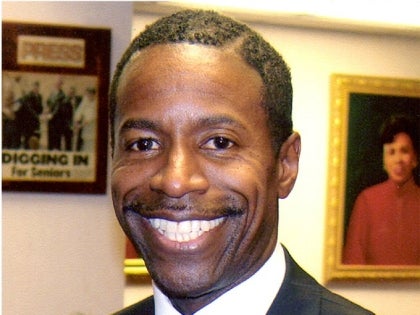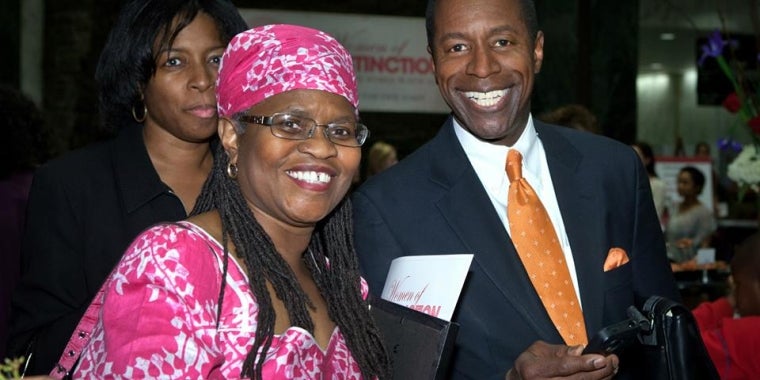
Remarks for World Congress on High Speed Rail
Malcolm A. Smith
December 9, 2010
Remarks for World Congress on High Speed Rail
Good Morning/Evening: It is my privilege to welcome you to the 7th World Congress on high speed rail. To this international gathering of industry leaders, I say “ni hao, konnichiwa, guten tag, bonjour...” I’d keep going, but I hear that audiences like politicians who can keep a deadline.
I would like to thank the UIC for giving me the opportunity to speak with you today, providing me a forum to discuss my thoughts on the importance of high speed rail, and the United States’ progress in advancing high speed rail.
High Speed Rail’s International Progress:
The fact that the World Congress is hosting this event outside of Europe for the first time should not be overlooked:
It shows the dramatic progress that our host has made. Having been here several times in recent years, I have had first-hand experience with China’s remarkable efforts to implement high speed rail.
Having taken the Shanghai Maglev Train to Pudong Airport twice(?), gliding along the countryside at over 200 mph (320 km/h), I love telling my colleagues in the States what the future of passenger rail looks like.
I was thrilled to receive my invitation to this event; I can’t think of a more appropriate venue than this one to discuss high speed rail’s recent progress - the People’s Republic of China has, simply, become the world’s leader in the development and deployment of high speed rail. As such, our host serves as both an inspiration and partner to the nations of the world like mine that are striving to embrace this vision.
The Importance of High Speed Rail:
You’ll hear plenty of facts and figures this week, outlining the necessity of high speed rail. Like many great infrastructure projects, the positive impacts fall into two categories for me: the economic development and environmental and land use impacts.
From an economic perspective, rail offers the means to link our megaregions of commerce and population. Rail can connect labor pools and population centers, bolster economic competitiveness and preparedness.
And using rail as a transit oriented development tool can bring people back together, reviving communities and creating opportunities for urban development and investment. For example, more than 15 million of my home state’s residents live within 30 miles of our train system. The possibilities are nearly unlimited.
Perhaps most importantly, the process of revitalizing our infrastructure creates a massive amount of jobs. In my home state of New York, we anticipate more than 247,000 jobs will be created or saved during the construction of rail service on our Empire Corridor.
The discussion of environmental benefits is summed up with the following: Rail transportation is simply the most efficient means of moving goods and people across land.
My favorite statistic is that one gallon of fuel can move a ton of goods or people over 450 miles (724 km). This works out to less than one-fifth of the emissions per-passenger mile of automobiles and less than one-fourth of planes’.
Electrified tracks reduce our need for oil even more, promoting national sustainability and dramatically reducing our carbon footprint. This saves consumers money, protects our air quality, and makes nations more efficient.
Federal Commitment:
So the natural follow-up question is this: what is the United States – one of the only industrialized nations still lacking high speed rail - doing to advance this vital cause? Well I am here today to report that the President’s commitment to HSR is strong, and I believe it has the staying power needed for implementation.
In February of last year, President Obama signed the Recovery Act, his proposal to stimulate economic recovery. In doing so, he invested over $300 billion US Dollars in national priorities, identifying the programs that provide the greatest opportunity to spur economic growth and employment. He chose to invest an unprecedented sum into high speed rail in this pivotal bill – a program that had never received genuine federal commitment before.
In April of 2009, President Obama’s railroad administration released a strategic plan outlining his vision for high speed rail. The plan identifies $13 billion US Dollars in federal funds – the $8 billion in the Recovery Act, and $5 billion to be distributed over five years – to jumpstart our nation’s passenger rail system and set the direction of our transportation policy for the 21st Century.
And it’s worked. Congress and the President are now considering a $50 billion US Dollar dedicated revenue stream for high speed rail in our next six-year transportation capital program, and states across the country are moving their high speed rail programs forward. With our united support and an effective bipartisan advocacy campaign, I am confident that we can secure this federal commitment.
Two of our largest states - California and Florida – have received nearly $5 billion US Dollars so far for their proposals to link their major cities with high-speed, express service at speeds exceeding 200 (320) and 160 mph (255 km/h), respectively. These states’ governors and legislatures have worked together – across party aisles - to secure state appropriations, provided the legislative framework needed to build and operate the systems, and passed the referenda needed to ensure construction of the system. And now, phase 1 of Florida’s high speed rail program is projected be operational by 2014.
New York’s Importance, Progress:
Now it’s time to talk about my favorite state…my home state of New York. New York is a pivotal component in our national rail network – not just because it connects the world with the best state in the country, but because it serves as a vital interstate and international conduit.
The Region:
The Northeast Corridor operates the Acela – the only high speed rail service that we currently have in the U.S. This corridor connects one of the world’s largest megaregions – uniting Boston with New York City and Washington, D.C. – pooling more than 50 million people and about 20% of our gross domestic product.
New York rail also connects the U.S. with Toronto and Montreal – another megaregion for population and commerce. Our Empire Corridor connects New York City with major upstate cities like Buffalo and Syracuse, and with Toronto and surrounding Golden Horseshoe region that represents about 20% of Canada’s population.
Updates:
I come here today to report that New York has “its act together” and is on its way to implementing high speed rail. After years of reports and studies, New York is improving speed, safety and reliability on its existing Empire line, and is laying the groundwork for new dedicated passenger rail lines on both the Empire and Northeast Corridors.
When I met with the President in March of 2009, he outlined the necessity for leadership on high speed rail. I promised him and Vice President Biden that I would become a leader among our state legislators.
Since then, I have:
· Become co-chair of the National Conference of State Legislatures’ high speed rail working group;
· We have jumpstarted nearly a dozen projects throughout the state and progressed on the EIS process needed to introduce a dedicated passenger rail corridor to the Empire and Northeast Corridors - already creating or saving more than 4,000 jobs in the process;
· We have held business summits in Albany and New York, connecting officials from more than 35 countries with business leaders and investors;
· We have prioritized high speed rail as an element of our long-term capital plan; and
· We enacted Planning Board legislation that will determine the best mechanism to operate and build a high speed rail network in New York.
As you’re probably gathering, I believe that leadership is particularly vital to building our high speed rail network. Before wrapping up, I’ll leave you with a few examples on leadership in implementing public works projects.
***
Over two centuries ago, a lone Assemblyman named Joshua Forman trekked down to Washington to petition President Thomas Jefferson to ask for help in building the Erie Canal. With eventual support from the Governor’s Office, a staggering $15 million US Dollar infrastructure investment was made in the Canal - leading to New York’s emergence as the center of the nation’s commerce.
***
About five decades later, President Abraham Lincoln decided to create the transcontinental network during the Civil War. Much of this network remains in place - the foundation of our passenger and freight rail routes.
***
In the 1950’s, President Eisenhower further connected this country with a network of highways. That system supported America’s residential zoning changes, altered its commuting habits, and revolutionized the way people are connected with one another.
***
Like these leaders, President Obama has committed to an ambitious public project that can secure our future while reconnecting the country - believing in the work ethic and ingenuity of his people. Like these past projects, I believe we can do it again with high speed rail.
I was first elected to lead my conference on a platform of restoring “One New York.” High speed rail is one of our most powerful mechanisms for connecting my state and our country – I believe it has the transformative power to make this “One Nation” again. This core value continues to drive my decision-making and advocacy, and I promise you that it will continue to do so until we have an operational high speed rail system in the U.S.
The time for our next Erie Canal is now.
Share this Article or Press Release
Newsroom
Go to NewsroomTHANKSGIVING ESSAYS AND CONTRIBUTIONS
December 2, 2014
Cycle With the Senator Saturdays in August
August 5, 2014

“Woman of Distinction" 2014 Honoree Adjoa Gzifa
July 11, 2014

Career Day at PS 48 in Jamaica
July 11, 2014
